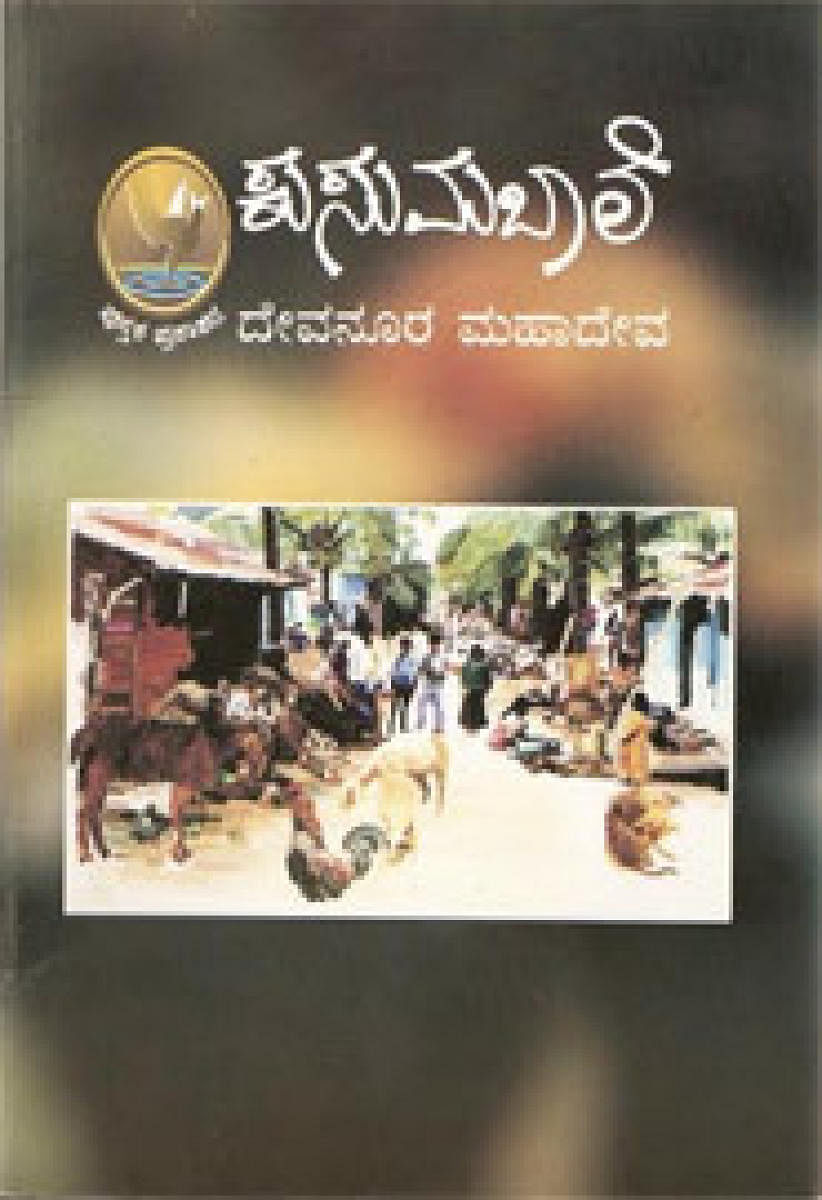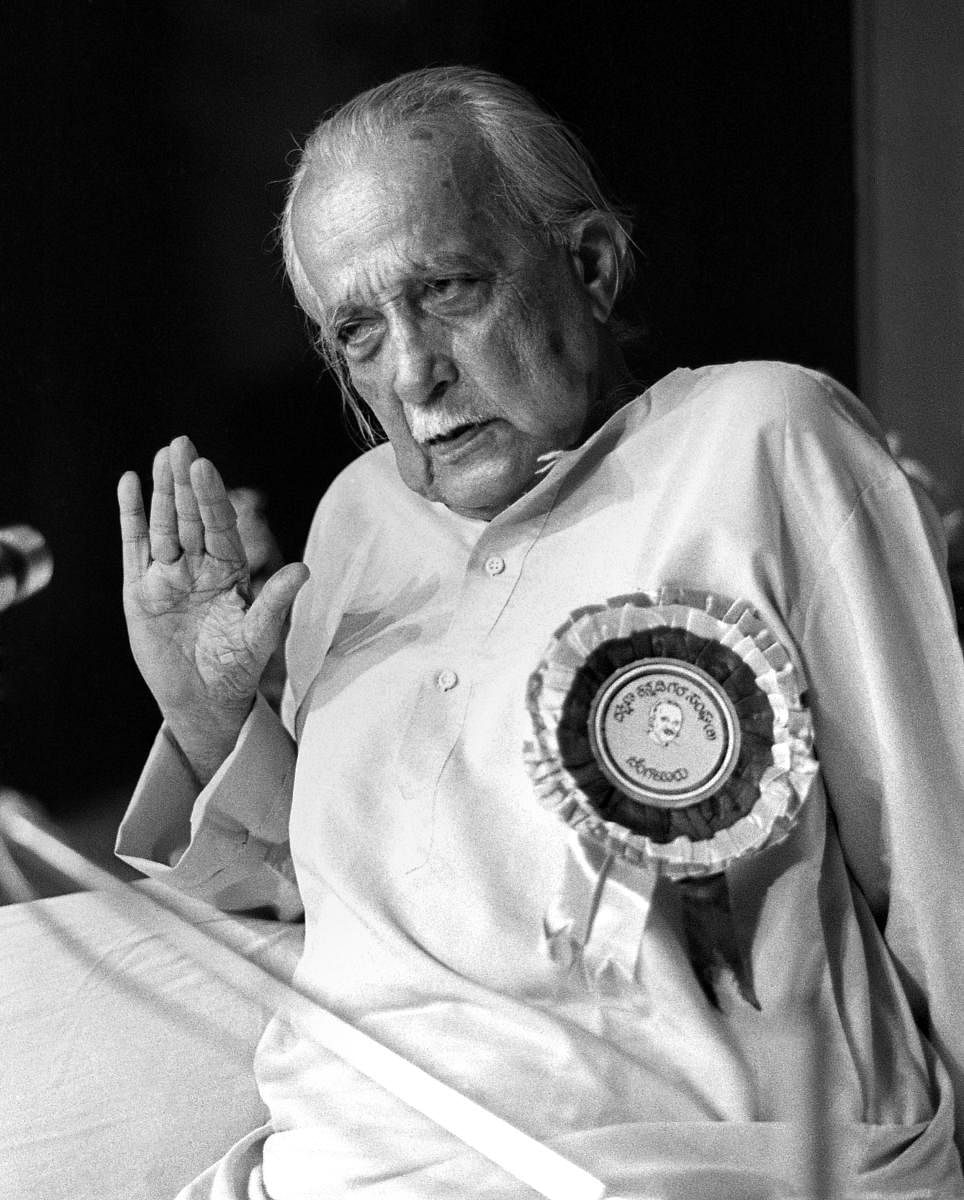
Gulvadi Venkatarao, a Saraswat Brahmin who worked in the police department during the last decades of the 19th century, helplessly watched the sad plight of the child widows in his community. The reformation movement which had spread in several parts of India had reached North Canara too.
The movement prompted Venkatarao, a BA graduate, to take a critical look at his orthodox society. The urge to educate his community led him to write a novel called Indirabai. Published in 1898, Indirabai is perhaps the first social novel in Kannada, where the eponymous protagonist, a child widow, gets married against the dictates of society. Its principal concern was a silent revolt against caste societies and accent on socio-cultural transformation.
Since then, Kannada novels have engaged with social movements and cultural issues from time to time. In its Navodaya (Renaissance) phase, Kuvempu and Shivaram Karanth examined the social dimensions of the freedom movement and the Gandhian ideals in their novels.
Karanth took part in the freedom struggle and was sympathetic towards the cause of the Dalits. In his novel Chomana Dudi (1933) the word ‘freedom’ inspires Choma, a Dalit labourer who works for a Brahmin landlord, to try and get a piece of land to till on his own. In the end, Choma does not get the piece of land, as the conservative times do not permit it.
Socialist cause
Despite its rather pessimistic ending, Karanth’s novel anticipates the socialist movement in the state by a full two decades. In the 1950s, Kagodu village in Shivamogga district saw tenant farmers who tilled the fields revolting against the landlords, with demands raised for ‘land to the tiller’. Shantaveri Gopalagowda, a socialist leader, stood by the tenants and provided the movement a socialist base.
The movement also propelled Gopalagowda into the legislature. A three-term MLA, Gopalagowda often raised the issue related to the tenant farmers and argued for giving ‘land to the tiller’ in the Assembly, with many Kannada writers supporting him.
When Devaraj Urs became the chief minister, he implemented the Karnataka Land Reforms Act 1974 which paved the way for the tiller to become the owner of the land. The legislation was hailed as the most revolutionary act of land reform in the country’s history.
Around the 1950s, the Pragatisheela (Progressive) phase of the Kannada novel dealt with the freedom movement and the working class movement as well.
Basavaraj Kattimani, a progressive writer, took part in the Quit India movement and was inspired by Marxism. In Kattimani’s Jwalamukhiya Mele (1951), the daughter and the son of a family leave home to take part in the working class movement, while their mother, a follower of the Gandhian freedom movement, lives alone at home, spinning the charka for her livelihood.
About that time, Niranjana, another progressive writer, wrote Chirasmarane (1955), a novel that dealt with the farmers’ revolt and the victimisation of the revolutionaries in Kayyuru, a small village in Kerala. Chirasmarane has inspired generations of Kannada readers and continues to do so, running into 14 editions till date.
Tracking history
When Kattimani was nominated as an MLC and met Gopalagowda, the latter invited him to Kagodu, requesting him to write a novel on the socialist land struggle. Kattimani did visit Kagodu, but the novel did not materialise. Later, U R Ananthamurthy, a close associate of Gopalagowda, wrote Avasthe (1978), a novel that captured the complexities of the movement and its leader as well.
In 2001, Na D’souza wrote Kolaga based on the historical details of the socialist movement in Kagodu.
Devanur Mahadeva’s epochal Kusumabale (1984) deals with the nuances of the Dalit movement, while Kundaranad Patil’s Hanta documents the farmers’ movement in the 1980s.
Poornachandra Tejaswi’s Chidambara Rahasya (1985) set the tone of the secular movement when communalism raised its ugly head in the 80s.
Women novelists like Sara Aboobacker and Veena Shanteshwara have also deeply dealt with burning social issues, inspiring generations of readers to empathise with social movements. Towards the end of 20th century, H Nagaveni looked at the impact of the Gandhian movement on the orthodox society in Dakshina Kannada through a feminist lens in Gandhi Banda.
The Kannada novel’s creative engagement with social movements continues even today — albeit in a limited manner — in a tradition that is more than a century old.
(The writer is a Kannada short story writer and playwright)
